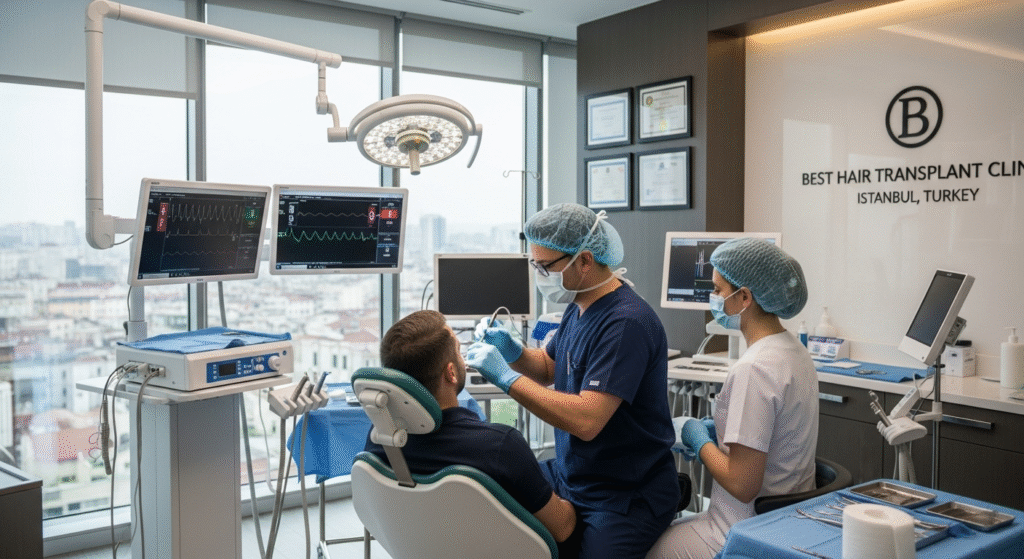Are you struggling with hair loss and considering a hair transplant to restore your confidence? At a reputable hair transplant institute, you can receive expert care, cutting-edge procedures, and personalized treatment plans tailored to your needs. This article explores what makes a hair transplant institute the right choice for your hair restoration, covering essential treatments, …
Are you struggling with hair loss and considering a hair transplant to restore your confidence? At a reputable hair transplant institute, you can receive expert care, cutting-edge procedures, and personalized treatment plans tailored to your needs.
This article explores what makes a hair transplant institute the right choice for your hair restoration, covering essential treatments, recovery, and tips for a successful outcome.

What Is a Hair Transplant Institute?
Defining the Role and Services
A hair transplant institute is a specialized medical facility dedicated to offering advanced hair restoration procedures. These institutes are staffed with experienced surgeons, dermatologists, and support teams who focus on diagnosing and treating hair loss.
Their goal is to help patients regain their natural hairline using the latest techniques and technologies.
- Comprehensive Care: From initial consultation to post-operative follow-ups, a hair transplant institute provides a complete package of services.
- Specialized Techniques: They offer treatments like Follicular Unit Extraction (FUE) and Follicular Unit Transplantation (FUT) that ensure natural-looking results.
- Expertise and Technology: Hair transplant institutes use state-of-the-art equipment and technologies, such as robotic systems, to optimize results.
Popular Hair Transplant Procedures Offered
Follicular Unit Extraction (FUE)
FUE is one of the most popular hair transplant techniques today. In this minimally invasive procedure, individual hair follicles are extracted from a donor area (typically the back of the scalp) and transplanted to areas affected by hair thinning or balding.
- Precision and Minimal Scarring: FUE is favored for its precision and the minimal scarring it leaves behind.
- Natural Results: The result is often undetectable, providing patients with a natural-looking hairline.
Follicular Unit Transplantation (FUT)
Unlike FUE, FUT involves removing a strip of scalp tissue from the donor area, from which individual follicular units are extracted and transplanted into the recipient area.
- Higher Graft Yield: FUT can yield a higher number of grafts in a single session, making it ideal for patients with more extensive hair loss.
- Potential Scarring: FUT can leave a linear scar, but it’s often hidden by surrounding hair.
Robotic Hair Restoration
Some institutes use advanced robotic systems, like the ARTAS® system, to assist in FUE procedures. These systems enhance precision, minimize human error, and help ensure high-quality grafts for better results.
- Robotic Precision: Robots can extract and implant hair follicles with incredible accuracy, reducing the risk of mistakes.
Choosing the Right Hair Transplant Institute
Factors to Consider
When selecting a hair transplant institute, there are several factors to keep in mind to ensure the best possible outcome:
- Surgeon Expertise: Look for board-certified surgeons with extensive experience in hair restoration. Their expertise will play a crucial role in achieving natural-looking results.
- Technology and Equipment: Ensure the institute uses modern equipment and techniques, including robotic systems and FUE/FUT methods.
- Patient Reviews and Results: Research the clinic’s reputation by reading patient reviews and examining before-and-after photos of previous patients.
- Consultation Process: A thorough consultation should involve assessing your hair loss pattern, discussing your goals, and deciding on the most suitable procedure for your needs.
What to Expect During the Procedure

Pre-Operative Preparations
- Consultation: You’ll have an in-depth discussion with the surgeon about your medical history, hair loss patterns, and expectations. A personalized treatment plan will be created based on these factors.
- Designing the Hairline: The surgeon will carefully design your new hairline, ensuring it looks natural and aligns with your facial features.
The Surgery
- Anesthesia: Local anesthesia will be administered to numb the area and keep you comfortable throughout the procedure.
- Follicle Extraction and Placement: Depending on the procedure (FUE or FUT), hair follicles will be extracted and then placed into the recipient area with precision.
Post-Operative Care
- Recovery Instructions: You’ll receive detailed instructions on how to care for your scalp after the procedure, including when to resume normal activities and how to wash your hair.
- Medications: Pain relievers and antibiotics may be prescribed to help manage any discomfort and prevent infection.
Recovery and Results Timeline
What to Expect After the Procedure
- First Week: Expect mild swelling and redness. Transplanted hair may fall out, but this is a normal part of the process.
- First Month: New hair will begin to grow in the transplanted areas, though results may be subtle at first.
- 3 to 6 Months: Significant hair growth starts to become visible as the follicles begin to settle and produce new strands.
- 12 Months: Full results are typically visible, with a natural-looking, thickened hairline.
FAQs
Q1: Is the hair transplant procedure painful?
Most patients report minimal discomfort during the procedure due to the use of local anesthesia. Post-operative pain is usually manageable with medications.
Q2: How long do the results last?
Hair transplants are permanent since the transplanted follicles are resistant to the hormone DHT, which causes hair loss. Results can last a lifetime with proper care.
Q3: Are there any risks or side effects?
Though rare, side effects may include scarring, infection, or swelling. Following post-operative instructions reduces these risks.
Conclusion
Choosing the right hair transplant institute is a critical step in your journey to restore your hair and confidence. By understanding the procedures, recovery process, and key factors to consider when selecting a clinic, you can make an informed decision that aligns with your goals. Consult with a trusted expert today and take the first step towards a fuller, more confident you.
Consult with a Specialist
If you’re considering a hair transplant, it’s essential to consult with an Dr. Uzma Irfan, an ISHRS-certified surgeon in Islamabad today at a trusted hair transplant institute. A consultation will help you understand the best procedure for your hair loss, outline expected results, and ensure the highest chance of success.






